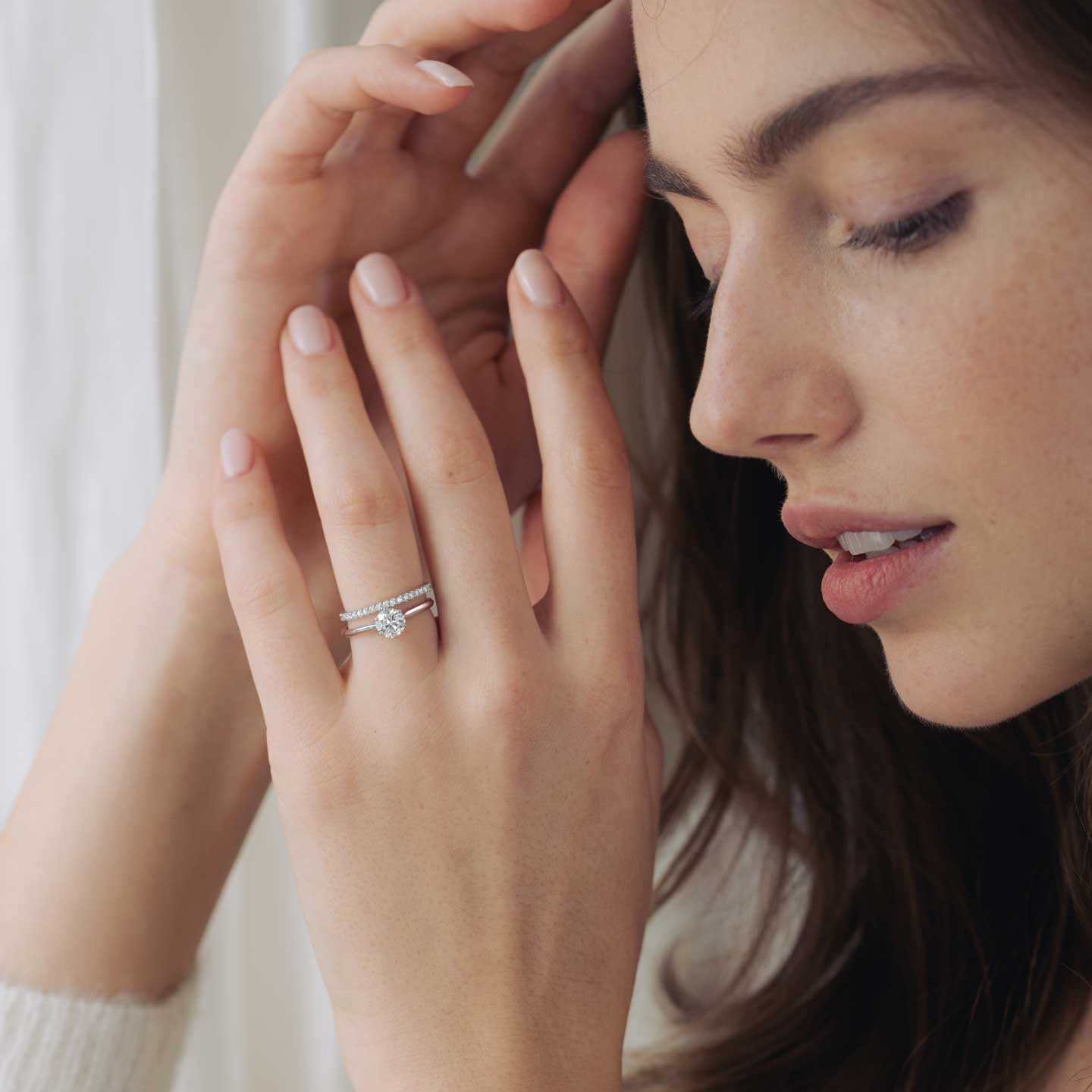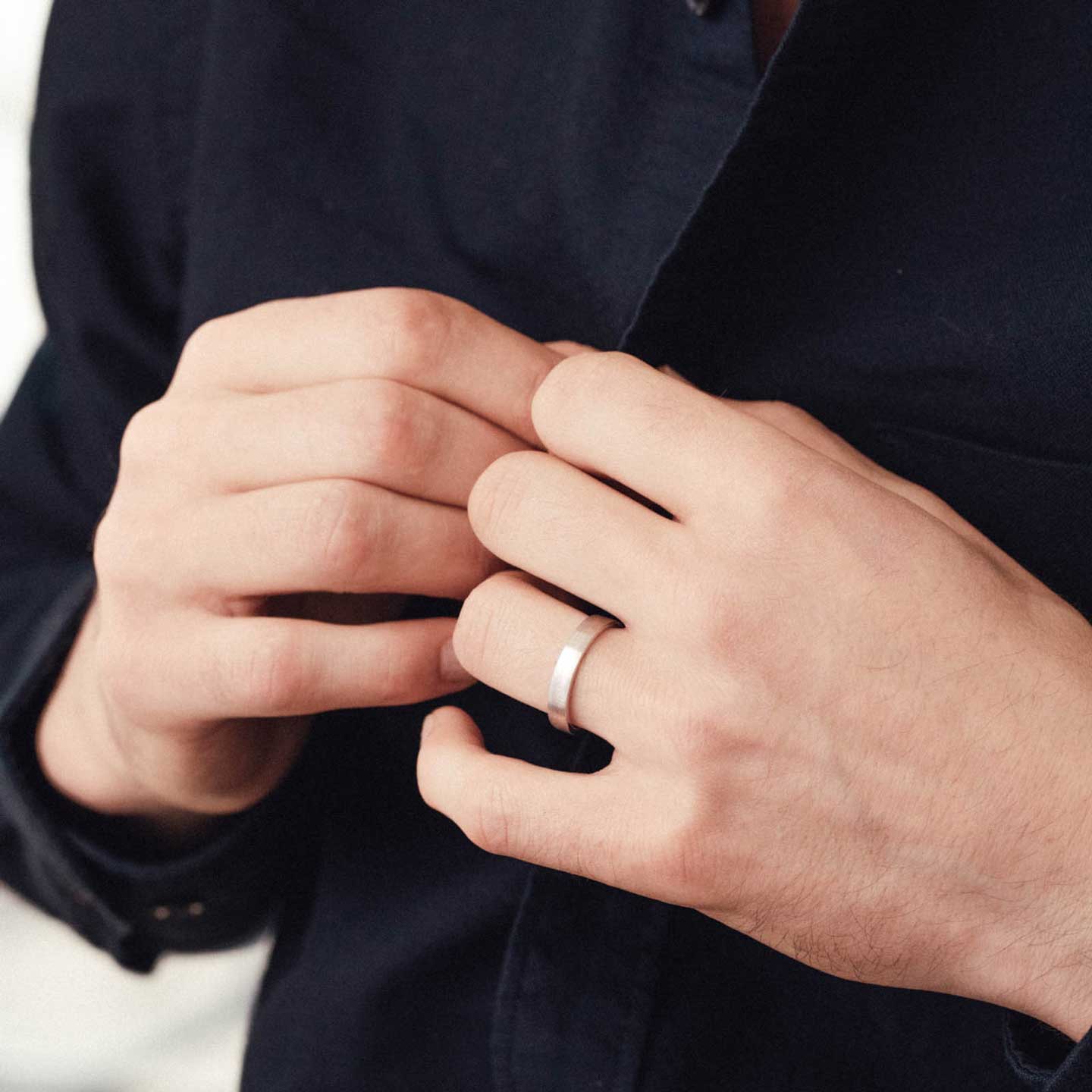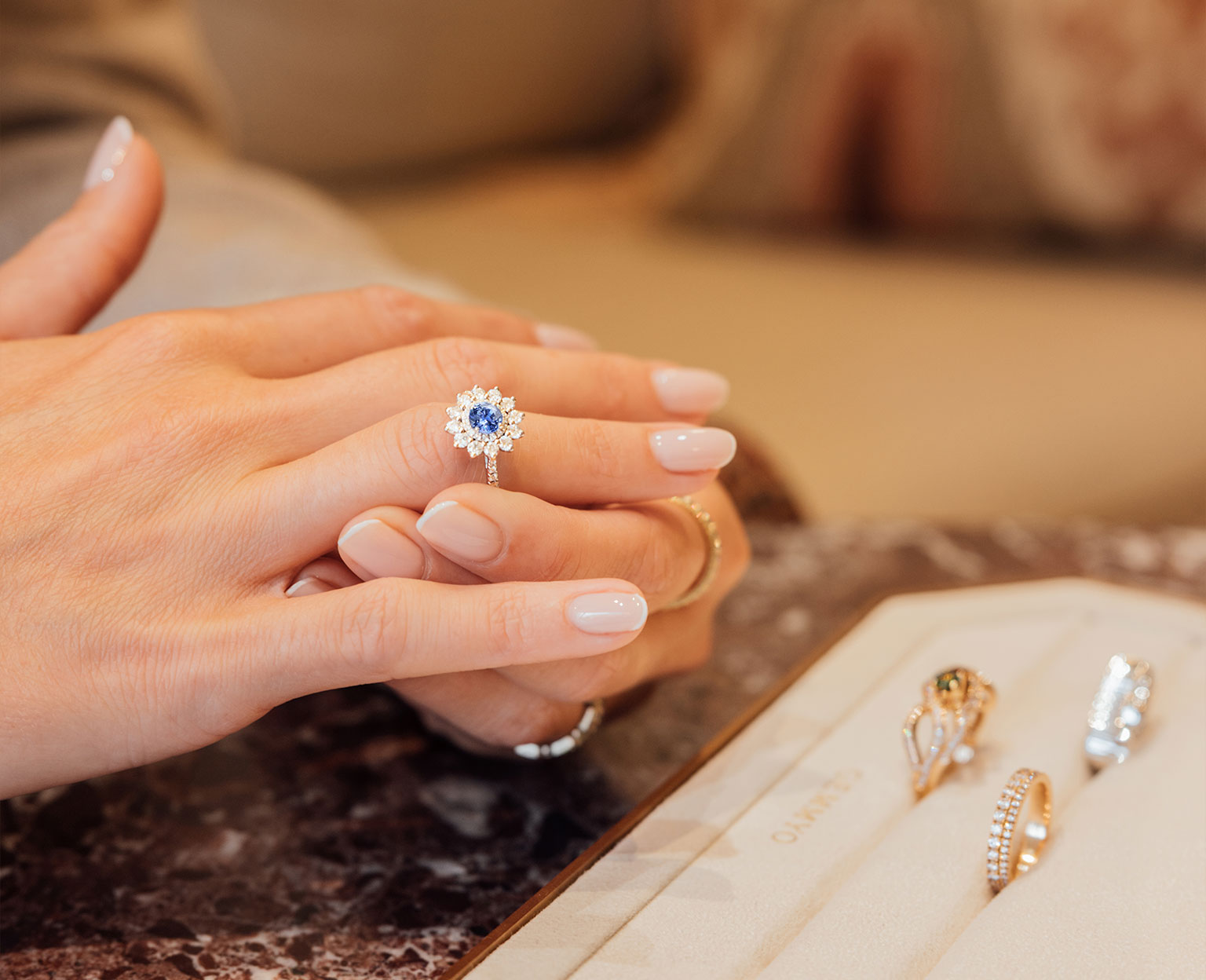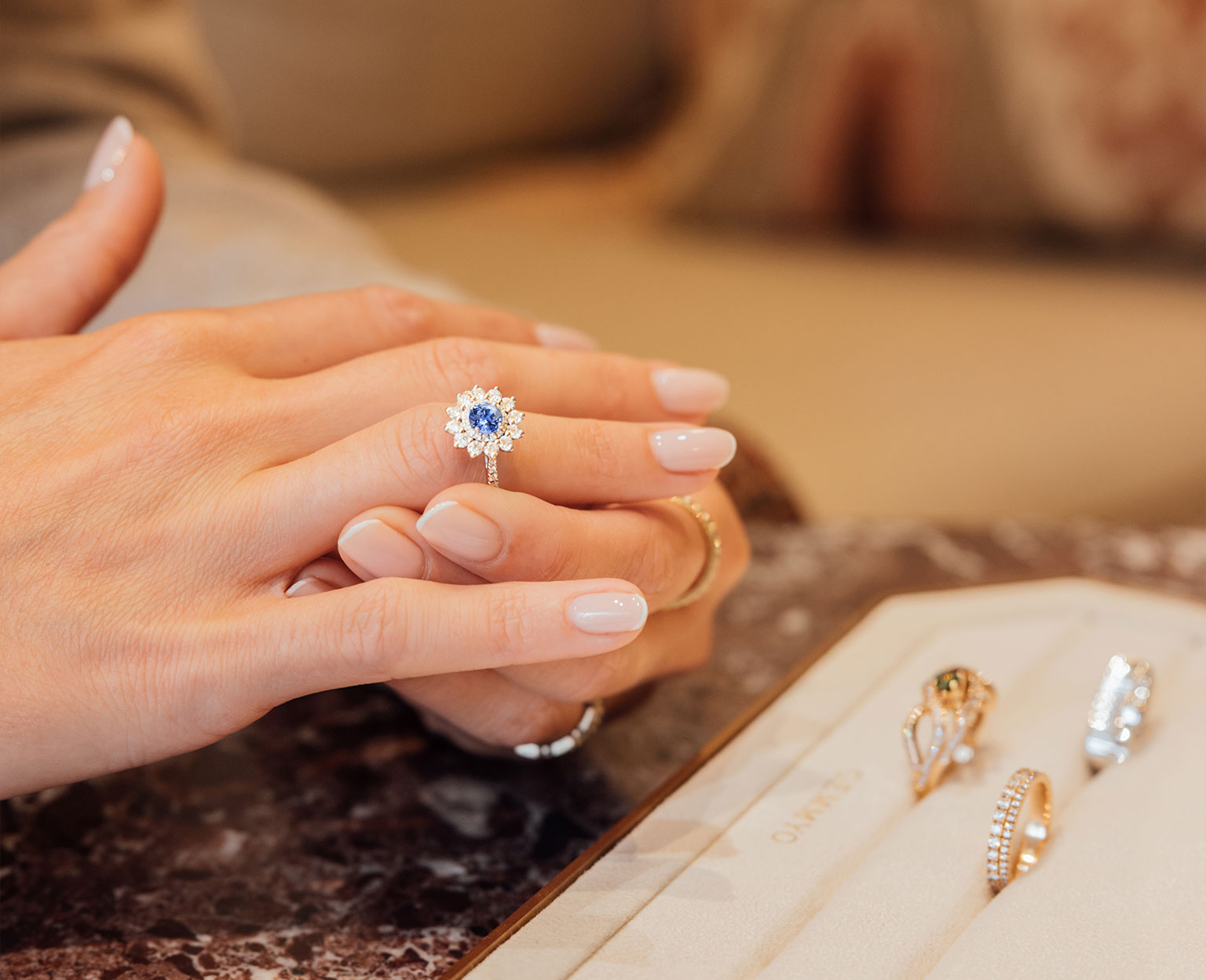Choosing the metal is an important step in the choice of a piece of jewelry because, of course, you don't want to get it wrong.
In jewelry, there is a wide variety of precious metals and it is not always easy to find your way around them!
Is platinum a good choice? What are the differences between platinum and white gold? Is platinum suitable for an engagement ring or a wedding band?
These are questions that you may be asking yourselves and to answer them, we have decided to offer you this guide to make you more aware about platinum jewelry!
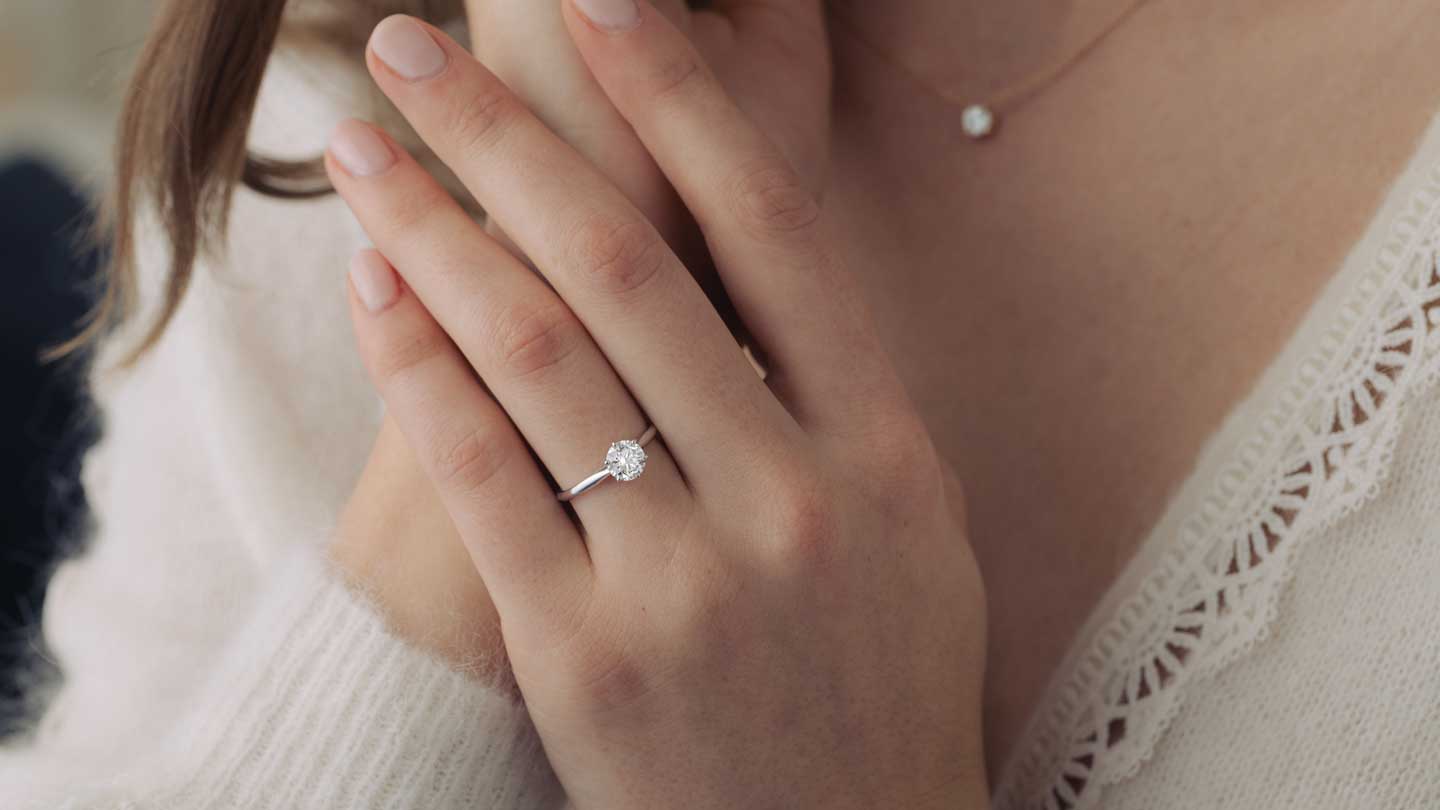
The basics
Before going into detail, let's first go over a few essential notions.
—— 1. What is platinum?
In ancient Egypt, platinum was already used as an ornament for sarcophagi, along with gold. Traces of this metal can also be found in the time of the Incas on jewelry and other ornaments.
An anonymous metal for centuries, it was officially discovered by the Spanish conquistadors in Colombia around the year 1500. Then called platina which means small silver because of its grey-white colour, it was often identified as a worthless base metal.
However, platinum is actually a very exclusive metal, up to 30 times rarer than gold!
To help you understand this, it is estimated that gold is produced at around 2500 tonnes per year. Platinum production per year is only about 160 tonnes. Just imagine!
Today, the exclusivity of platinum is well known to the general public and has even spread into popular culture: for example the famous platinum disc that symbolises the sale of one million albums for an artist or, for the more gamers among us, the ultimate trophy in the world of video games.
a. What does platinum look like?
Like gold, raw platinum, also known as native platinum, can be found in the form of nuggets or flakes, but it is often found in rocks mixed with other metals such as iron, nickel and other metals of the same family.
Native platinum is a naturally white precious metal, which is one of the reasons why it is so sought after in jewelry... more on this later.
b. What makes platinum so special?
Platinum is a very dense metal
One of the main characteristics of platinum is its high density (40% to 60% denser than gold by volume).
Why is this interesting? Well, very few agents, such as chemicals and acids, can attack it.
This makes platinum an extremely durable and long-lasting metal and therefore ideal if you want to pass on a precious object, such as a piece of jewelry for example.
Platinum is a malleable metal
Known as a ductile metal, platinum is a metal that is both strong and very malleable!
This makes platinum particularly suitable for the manufacture of small, sometimes technically shaped objects in medicine, engineering and of course jewelry!
Platinum is very resistant to abrasion
Abrasion is defined as wear due to friction and platinum is an unrivalled champion for its extreme resistance in this area.
Did you know?
Because of all its properties, platinum is a highly sought-after metal in industry. Here are some examples of its uses:
-
The automotive sector represents the largest use of platinum in the world for the manufacture of catalytic converters, used to reduce toxic engine emissions.
-
Due to its high melting point and very high abrasion resistance, platinum is an ideal metal for the manufacture of tools used to handle very hot materials such as molten glass.
-
Platinum is also widely used in medicine for the manufacture of medical implants such as peacemakers, due to its completely hypoallergenic nature.
c. The price of platinum
Like gold, the price of platinum is dictated by its price, so its value fluctuates constantly.
As with all precious metals, it is important to note that there is a direct correlation between physical rarity and price. This is particularly true for platinum.
To give you an, example and this is the price comparison between platinum and other metals for a very simple piece of jewelry such as a half-band wedding band:
- A St-Germain 2.5 mm platinum ring is priced at 620 €
- A St-Germain 2,5 mm yellow gold ring is priced at 490 €
These price differences are mainly justified by physical rarity as we have seen: platinum is a metal up to 30 times rarer than gold so it is logically more expensive than the latter.
It should also be noted that because platinum is denser, more material is needed to make a platinum jewel, which also justifies its higher price.
—— 2. What are the different qualities of platinum?
Platinum is generally not processed very much. In most cases, it is a very pure metal, so its legal grades are generally high, at least 85% pure platinum in an alloy.
For clarity, here are the 3 highest legal grades you are likely to encounter:
-
850/1000 platinum is 85% pure platinum.
-
900/1000 platinum is 90% pure platinum.
-
950/1000 platinum is 95% pure platinum.
*At Gemmyo, we only use 950/1000 platinum.
What is legal title?
The term legal title or titration corresponds to the rate of pure metal present in its alloy.
For example, 950/1000 means that there is 95% pure platinum in the alloy; the rest is made up of other metals (generally iridium).
Legal title is also a so-called standard grade, meaning that it is the same everywhere.
To give you a concrete example: the 950/1000 platinum we use at Gemmyo to make our jewelry is strictly the same as the one used by the famous Maisons of the Place Vendôme who also use this quality.
You are probably wondering how to recognise a particular quality? The most effective method is to look at its hallmark!
Called the title or guarantee hallmark, the hallmark is an official and obligatory mark affixed by the State (French customs) on a precious metal to confirm its authenticity.
Where to find this mark on a piece of jewelry?
In France, all handcrafted platinum jewelry weighing more than 3 grams must be hallmarked. There are several methods for affixing a hallmark to a piece of jewelry. At Gemmyo, they are all hallmarked in the traditional way with a small chisel and a hammer.
On a ring you will often find your hallmark opposite your gemstone(s) and on the outside of the setting!
Contrary to what you might think, the hallmark is not a defect, but a guarantee of the quality of a jewel. It is a sort of label for the jewel.
At Gemmyo, we only use 950/1000 platinum to make our jewelry, a grade recognisable by its dog's head hallmark.

Now that we have reviewed the basics, it is time to get to the heart of the matter and determine whether platinum is a good choice for your jewelry!
We will now discuss its main characteristics in more detail, then we will look at some tips and finally we will see its advantages and disadvantages!
The main characteristics of platinum
Instinctively, when platinum is mentioned, we are usually immediately reassured that it is a great quality of metal for jewelry... let's try to understand why.
—— 1. 950 platinum, the most noble metal
Platinum is a metal that is particularly suitable for everyday jewelry.
-
First of all, it is a very resistant metal. The high density of this metal allows it to cope perfectly with our sometimes hectic daily lives, especially for a ring.
Note: This characteristic also implies a great deal of manufacturing know-how. The melting point of platinum is 1768° compared to 1064° for gold, so the difficulty of working platinum also lies in having the equipment to do so. -
Platinum is a metal that is extremely resistant to corrosion and abrasion. It will therefore be very durable over time. This means in practice that it is a perfect metal if you want to pass on your jewelry.
-
Platinum is a completely hypoallergenic metal, so it is suitable for all skin types, even the most sensitive.
For all these reasons, we particularly recommend 950 platinum for a piece of jewelry that will be worn on a daily basis such as a wedding band or an engagement ring.
Good to know
Contrary to what you might think, 950 platinum is a more malleable metal than 750 (or 18K) gold.
What does this mean?
-
Your platinum jewelry will be slightly more prone to scratches than a 750 gold jewelry.
-
Not all models are technically feasible in platinum because they could be deformed too easily, for example our Ariane Pavée, and could be twisted if they are made of platinum. Rest assured, however, there is no risk of this happening with gold, which is the hardest precious metal used in jewelry!
Beyond its strength, platinum is a precious metal that is particularly popular in jewelry because of its colour and durability.
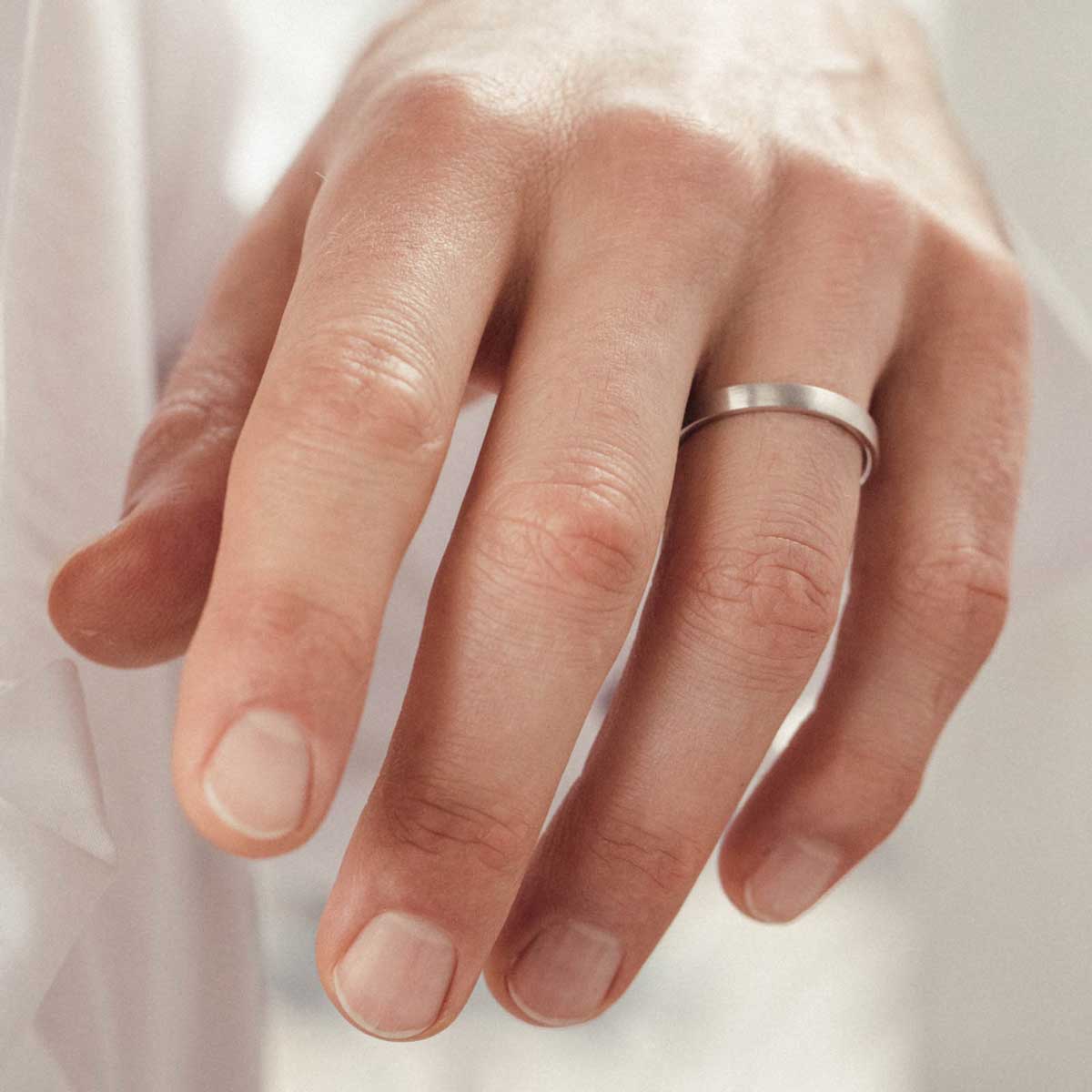
—— 2. Platinum, an eternal colour
As we have seen, one of the main properties of platinum is that it is a naturally white metal.
In jewelry making, it is barely transformed or mixed with other metals, and is even the purest metal used.
What does this mean in practice?
Your platinum jewelry will not lose its colour over time!
This means that even after many years your platinum jewelry will remain white, just like the first day.
Easy to care for, it is therefore often chosen for jewelry that is to be worn on a daily basis, such as wedding bands.
Perfectly suited if you want a white metal for your jewelry, we often hear our customers compare it to white gold, is this justified?
—— 3. Which metal should I choose between white gold and platinum?
Platinum and white gold are two metals particularly recommended for jewelry worn on a daily basis, which is why they are often confused!
They are visually very similar and it is not easy to tell them apart without an expert eye, but platinum is very slightly greyer than white gold.
Good to know
One of the tricks to distinguish a platinum jewel from a white gold jewel is its weight!
Yes, as we said, platinum is denser and therefore slightly heavier than white gold.
So which one should you choose if you're not sure?
First of all, it's obvious but let's remember that these are two different families of metals with different properties.
As with all precious metals, white gold and platinum have their advantages and disadvantages. Here are two things that may help you choose:
-
750/1000 white gold is a metal that will develop a patina, it will need to be maintained so that it does not lose its beautiful colour over time. If you don't want your jewel to change colour over time and keep its beautiful luminous hue, then definitely choose platinum!
-
Platinum is slightly softer than white gold. If you are sensitive to small scratches on your jewelry or if you choose a model with large metal (like an Arsenal wedding band for example), then choose white gold !
In the end, it is important to remember that both platinum and white gold are perfect for jewelry such as a wedding band or an engagement ring, you will not make a bad choice between the two!
It's up to you to simply choose the pros and cons that suit you best!
To help you, here is all our information on white gold.
Did you know that?
The rhodium used for rhodium plating of metals such as white gold or black gold is a metal from the platinum family.
Rhodium is even rarer than platinum, in the top 5 rarest metals on the planet, it is estimated to be about 100 times rarer than gold, hence its high price!
—— 4. Platinum is a metal that goes well with all gemstones
Synonymous with eternity and refinement, platinum is ideal with precious stones such as diamonds or sapphires.
It also goes very well with stones such as tanzanite or aquamarine, but there are always slightly less harmonious combinations. It is a matter of taste and preference of course, but some say that stones such as citrine or garnet tend to look much better on yellow gold or even rose gold than on a white metal which will bring out their brilliance.
However, it can be argued that platinum's neutral, silvery white colour works well with all stones and skin tones. So all you have to do is choose your stone
You can't go wrong with platinum!
Most popular stones to be associated with platinum
Diamond Aquamarine Sapphire Tanzanite Tourmaline Ruby Emerald TsavoriteLeast popular to be associated with platinum
GarnetWhat should we remember about platinum?
—— Its advantages:
-
950 platinum is the purest and noblest metal used in jewelry.
-
It is stainless and therefore very durable over time.
-
It can be combined with all stone colours.
-
It is ideal for all types of jewelry and particularly recommended for those worn on a daily basis such as a wedding band or an engagement ring.
-
It is hypoallergenic.
—— Its disadvantage:
-
More malleable than gold, it is slightly more prone to scratching than gold.
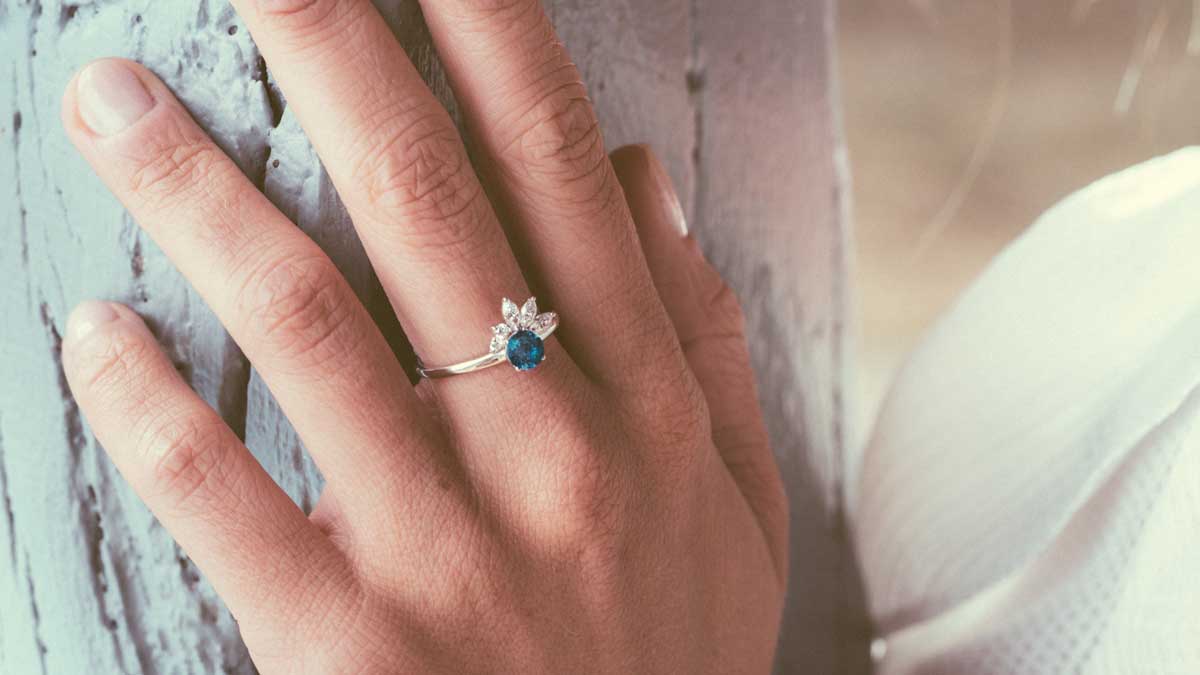
To conclude
950 platinum is the best quality platinum you will find in jewelry.
It is a timeless metal that we recommend for all types of jewelry and especially for everyday jewelry such as wedding bands or engagement rings.
Platinum is a naturally white and very pure metal. This means that your platinum jewelry will never lose its colour over time. The perfect symbol for a piece of jewelry that should count and last, don't you think?
















